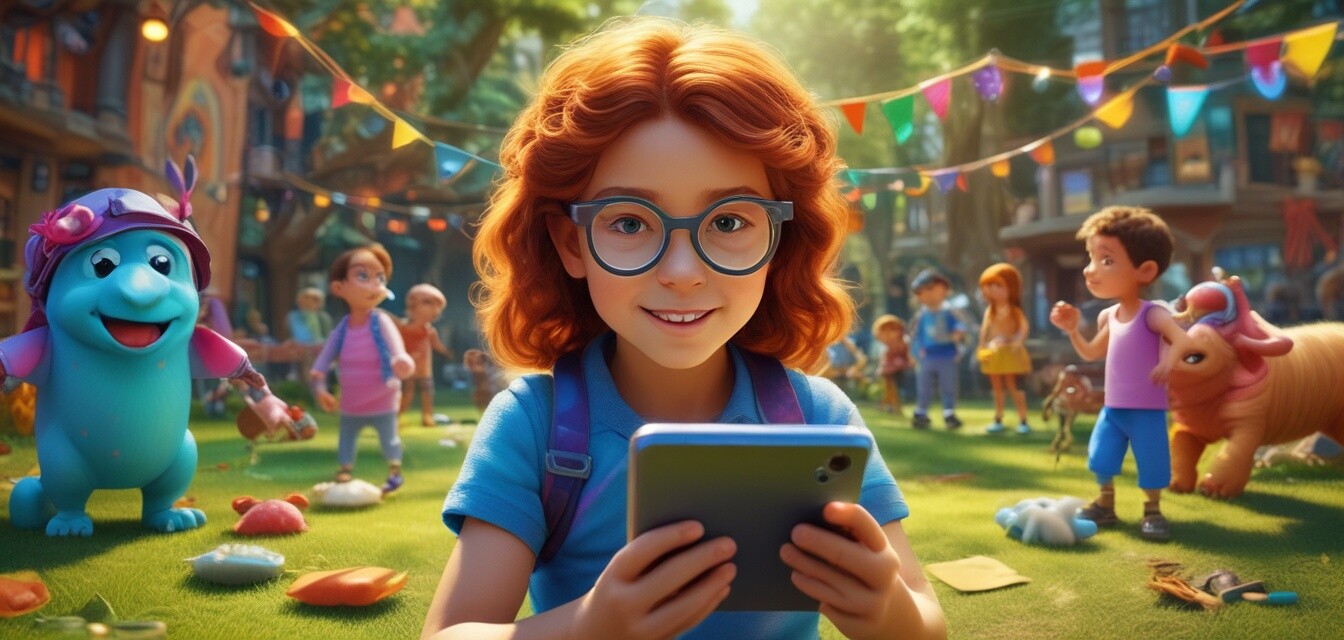
How Augmented Reality is Impacting Children's Play in 2025
Key Takeaways
- Augmented reality (AR) is redefining how children interact with their surroundings.
- AR applications merge digital content with the physical world, enhancing play experiences.
- Educational benefits are evident as AR encourages engagement and creativity.
- Safety considerations and screen time management will be essential with increasing AR content.
- The future of play will be shaped by continuous technological advancements in AR.
The gaming landscape is rapidly evolving, with augmented reality (AR) standing at the forefront of this transformation. By the year 2025, AR will significantly influence how children play, learn, and interact with their environment. By merging the physical and digital worlds, children can now engage in innovative ways that enrich their play experiences. In this article, we will explore how AR is shaping playtime for kids, focusing on its implications, benefits, and future trends.
Understanding Augmented Reality
Augmented reality refers to the technology that overlays digital information, such as images, sounds, or text, onto the real-world environment, offering users an interactive experience. In contrast to virtual reality, which immerses users in a completely digital world, AR enhances the real world by incorporating computer-generated elements.
How AR Works
AR works using a combination of hardware and software, typically through smartphones, tablets, or AR glasses. The basic components include:
- Camera: Captures the user's environment.
- Processor: Analyzes the data to identify objects and surfaces.
- Display: Renders the digital content, presenting it alongside the real world.
- Software: Creates the AR experience using applications and algorithms.
The Rise of Augmented Reality in 2025
As AR technology advances, its adoption in children's play has accelerated. Potentially altered by the educational focus and increased entertainment value, AR is becoming integral to play. Below is a comparison of traditional play versus AR-enhanced play:
| Aspect | Traditional Play | AR-Enhanced Play |
|---|---|---|
| Interaction | Limited to physical objects | Interactive digital elements augment physical play |
| Learning Opportunities | Primarily experiential | Interactive and gamified learning environments |
| Accessibility | Location-based play | Available anywhere with a device |
| Creativity | Static and predefined | Dynamic and open-ended possibilities |
Benefits of Augmented Reality for Children
1. Enhanced Learning Experiences
AR fosters a new kind of learning, making educational content more engaging through interactive experiences. As noted in our buying guides, children often learn better when they are actively involved in their learning process. AR applications turn traditional lessons into exciting activities that encourage exploration and curiosity.
2. Boosted Creativity
With AR, children can express their creativity in unique ways. They can design their own games, create virtual art, or even build stories that intertwine with real-life settings. This innovative approach to creativity inspires kids to think outside the box.
3. Social Interaction
AR is transforming play into a social experience. Children can engage in collaborative games where they interact with peers in augmented environments, promoting teamwork and shared experiences. This aspect is essential for developing communication and social skills.
4. Safety Considerations
Even though AR offers numerous advantages, safety is a concern for parents. It's crucial for children to be aware of their surroundings while using AR. As parents, maintaining a balance between fun and safety is vital as children engage with this technology.
Challenges to Consider
While the prospects of AR are exciting, there are several challenges to address:
- Screen Time Management: AR can lead to increased screen time, raising concerns regarding children's health and wellbeing.
- Content Quality: Ensuring age-appropriate and educational content is essential as the market expands.
- Physical Interactions: Balancing physical play with digital engagements is crucial for overall development.
Pros
- Engages children's imagination and enhances learning.
- Encourages collaboration and social interactions.
- Provides dynamic educational experiences tailored to individual needs.
Cons
- Potential for increased screen time-related health issues.
- Quality and safety of AR content may vary.
- Risk of distraction from real-world play and interactions.
Future Trends in Augmented Reality
As we look ahead, AR is expected to evolve in several ways:
- Integration with AI: Enhanced personalization and adaptive learning experiences through AI technology.
- Increased Accessibility: Lower prices and improved access to AR-compatible devices will facilitate wider usage.
- Emphasis on Collaborative Play: More platforms will focus on social interactions in AR gaming, fostering community and friendships.
Conclusion
The influence of augmented reality on children's play by 2025 promises to be profound. By merging the digital and physical worlds, AR offers new opportunities for engaging, educational, and entertaining experiences. As parents, embracing AR while being mindful of its challenges can create a balanced approach to play, benefiting children's development and learning through technology. To explore more about related trends in gaming, visit our news and trends page.